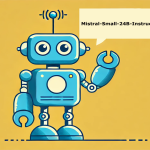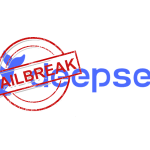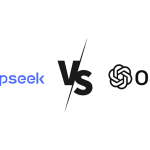The Enron Egg: A Satirical Take on Nuclear Energy Solutions
The world of tech innovations often stirs excitement, but occasionally, it also becomes the stage for elaborate hoaxes. Enter the Enron Egg: a satirical micro nuclear reactor that recently captured widespread attention. With claims of providing safe, affordable, and efficient nuclear energy to households, the Enron Egg fooled some, amused many, and served as a clever critique of modern energy solutions. Let’s dive into the hoax, its implications, and the reality of nuclear power in today’s energy landscape.
What is the Enron Egg?
Billed as a revolutionary home energy solution, the Enron Egg supposedly harnessed nuclear power in a compact, egg-shaped device. According to its creators, it offered benefits such as:
- Exceptional Safety: Featuring fail-safe mechanisms, advanced shielding, and precise fission regulation using boron-coated control drums.
- Unparalleled Efficiency: The use of Uranium-Zirconium Hydride fuel rods combined with a 3D-printed Inconel heat exchanger promised compact, sustainable power.
- Affordability: The product purportedly provided reliable energy at a fraction of the long-term cost of traditional systems.
Despite these claims, the Enron Egg is entirely fictional—a parody created to entertain and provoke thought about energy innovation. The hoax capitalized on the public’s fascination with clean energy solutions and the tech industry’s reputation for bold promises.
How the Hoax Unfolded
The Enron Egg was announced on a parody website resembling that of the infamous Enron Corporation, a company known for its catastrophic collapse in 2001. The fake press release declared the company’s “resurgence” as a leader in energy innovation. Accompanied by a slick marketing campaign, the satire mimicked the polished presentations of genuine tech launches, complete with enthusiastic testimonials and dramatic visuals.
One highlight was a parody product reveal video featuring fake executives praising the Egg’s transformative impact on power, independence, and freedom. The presentation was staged with meticulous attention to detail, mirroring the style of real tech product launches with a mock audience and enthusiastic applause. While many recognized the joke, some were genuinely intrigued, even inquiring about preorders and availability.
Social media played a key role in spreading the hoax. Platforms like X (formerly Twitter) were abuzz with reactions ranging from laughter to confusion. Comments such as “I envision the world powered by Enron Eggs over easy!” highlighted the humorous nature of the campaign. However, the rapid spread of misinformation also emphasized the need for digital literacy and critical thinking.
Unpacking the Satire
The Enron Egg’s satirical brilliance lies in its critique of:
1. Corporate Overpromising
Tech companies often exaggerate product capabilities, creating unrealistic consumer expectations. The Enron Egg’s claims, like operating for 10 years without refueling, parody this tendency. It serves as a reminder that groundbreaking promises should be met with skepticism and rigorous evaluation.
2. Misinformation in the Digital Age
The internet’s rapid dissemination of information allows hoaxes to gain traction. Some individuals believed the Enron Egg was real, underscoring the importance of verifying sources and questioning extraordinary claims. In a world where fake news and deepfakes are increasingly common, the hoax highlights vulnerabilities in the public’s ability to discern truth from fiction.
3. Energy Challenges
While nuclear power is a promising solution to global energy needs, it faces significant hurdles, including high costs, regulatory barriers, and public fear stemming from historical nuclear disasters. By exaggerating the benefits of the Enron Egg, the hoax draws attention to these real-world challenges and the complexity of implementing nuclear technology at scale.
The Realities of Nuclear Energy
Nuclear energy is a double-edged sword, offering immense potential and complex challenges. Here are some key considerations:
Advantages
- Low Carbon Emissions: Nuclear reactors produce minimal greenhouse gases, making them a cleaner alternative to fossil fuels.
- High Energy Density: A small amount of nuclear fuel can generate enormous amounts of energy, making it highly efficient and reducing resource dependency.
- Reliability: Unlike solar or wind power, nuclear energy isn’t weather-dependent, providing consistent output. This reliability is especially valuable for industries and regions requiring stable energy supplies.
Challenges
- Safety Concerns: Accidents like Chernobyl and Fukushima have left lasting fears about nuclear safety. While modern reactors are designed with fail-safe mechanisms, public perception remains a barrier to widespread adoption.
- Waste Management: Disposing of radioactive waste remains a significant environmental and logistical challenge. Innovations in waste recycling and long-term storage are essential to mitigate these risks.
- High Initial Costs: Building nuclear plants requires substantial investment and extended timelines. The financial burden often deters governments and private entities from pursuing nuclear projects.
In light of these factors, the Enron Egg hoax invites reflection on the balance between ambition and realism in energy innovation.
Lessons from the Enron Egg Hoax
The Enron Egg hoax is more than just a parody; it’s a wake-up call. Here’s what we can learn:
1. Critical Thinking Matters
In an age of misinformation, it’s crucial to verify sources and question claims that seem too good to be true. The Enron Egg serves as a reminder that not everything presented as innovation is genuine, and due diligence is vital.
2. The Need for Transparency in Energy Innovation
Energy companies must balance ambition with honesty, avoiding exaggerated promises that could erode public trust. Transparency about limitations, costs, and risks is essential to building credibility.
3. Public Engagement is Key
For nuclear power to gain wider acceptance, stakeholders must address safety concerns, communicate transparently, and invest in public education. Engaging communities in dialogue can help demystify nuclear technology and foster informed support.
Conclusion
While the Enron Egg is purely fictional, it serves as a compelling commentary on technology, corporate culture, and energy innovation. It reminds us of the importance of skepticism, the potential of nuclear power, and the need for responsible communication in driving meaningful change. Satire, when done effectively, can illuminate truths often overlooked in earnest discussions.
As we navigate the complexities of modern energy solutions, the Enron Egg’s playful critique encourages us to envision a future that balances ambition with integrity. Share your thoughts below: how can we ensure innovation serves humanity without falling prey to overhype?






